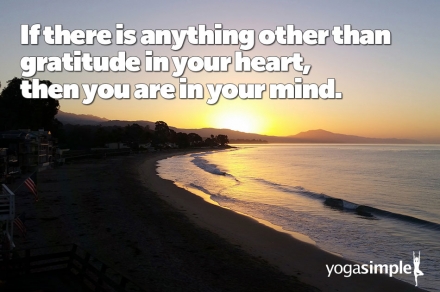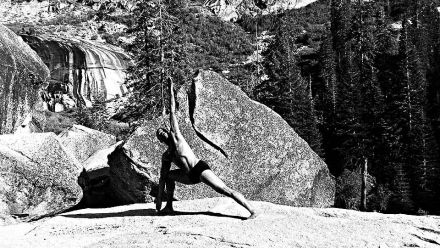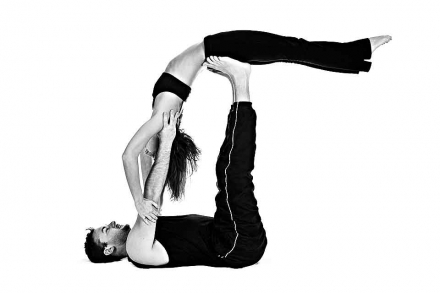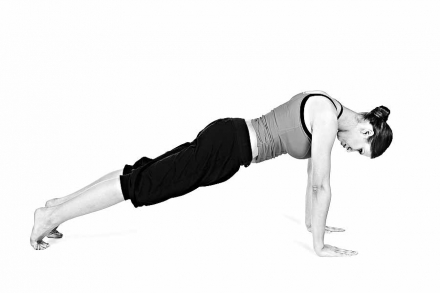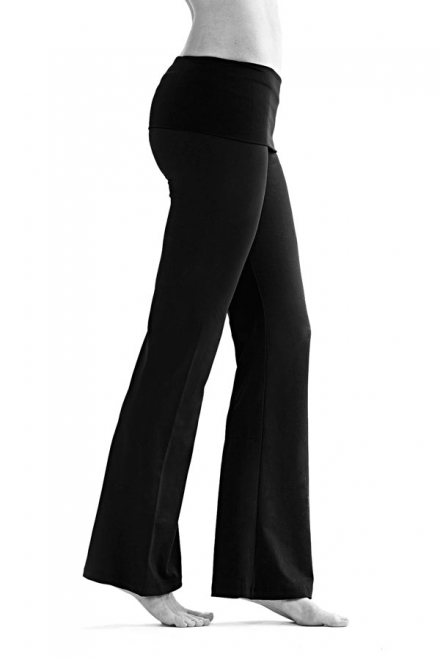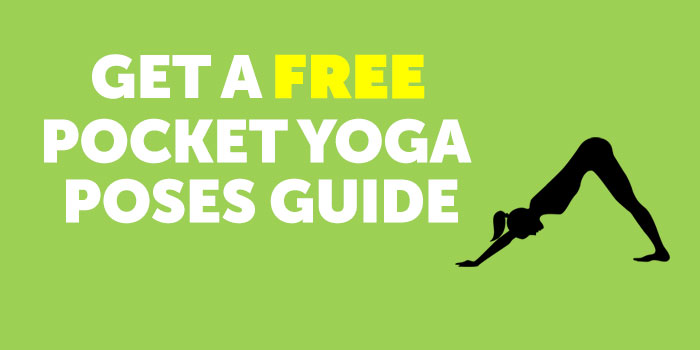Hey there, yoga enthusiast! Ever found yourself in a mental maze, unable to navigate your thoughts or find mental peace? I mean, who hasn’t, right? Well, let me introduce you to the dynamic duo of Yoga and Mindfulness. This pair can help you achieve that elusive mental clarity and tranquility we all crave. Imagine being able to clear the mental fog and reach a state of calmness, all with a few stretches and mindful breathing. Sounds pretty blissful, huh?
Now, it’s not about turning into a human pretzel or holding your breath till you pass out. It’s about mindful yoga. This is yoga that encourages you to be present in the moment, focusing on your body and breath, rather than letting your mind wander off to your dinner plans or the laundry pile. With mindful yoga, you’re not just stretching your body, you’re also flexing your mind muscle for better mental health. So, if you’re ready to explore yoga for mental peace, then grab your yoga mat and join me on this journey towards a peaceful mind. It’s going to be a fun, insightful, and – dare I say – ‘stretching’ adventure!
What is Yoga?
Let’s delve into the fascinating world of yoga. We’ll begin with an exploration of its Origins, which has ancient roots. Next, we’ll touch on the numerous Benefits of Yoga, from physical to mental well-being. We’ll segue into the different Types of Yoga, each offering unique experiences. Then, we’ll delve into Yoga and Meditation, a combination that promotes mindfulness. Lastly, we’ll explore the Yoga Philosophy, a profound insight into this holistic discipline. Join us as we unravel the wonders of yoga!
The Origins of Yoga
This ancient discipline, dating back to around 5000 years, has its roots deeply embedded in the rich soil of Indian subcontinent. The word Yoga itself derives from the Sanskrit word ‘Yuj’, meaning to join or unite. This suggests the fundamental purpose of yoga: to unite the human consciousness with the universal consciousness, resulting in perfect harmony between mind, body and spirit.
The birth of Yoga was first mentioned in the Rig Veda, one of the oldest texts in the world, which contained songs, mantras and rituals used by Vedic priests, also known as Brahmans. However, it was the Bhagavad Gita, a 700-verse Hindu scripture, that first recognized yoga as a means to achieve self-realization and inner peace.
The practice then evolved over centuries, with different paths and schools of yoga emerging, each with its unique focus and techniques. It’s fascinating to see how yoga, from its humble beginnings, has grown into a global phenomenon, embraced by millions for its many benefits. Indeed, the journey of yoga is a testament to its timeless relevance and universal appeal.
The Benefits of Yoga
The benefits of yoga extend much beyond the physical realm. Indeed, the holistic benefits encompass mind, body, and spirit.
On the physical front, yoga can enhance your flexibility, strength, and posture. Your body can become more toned and you might even shed some unwanted pounds. But that’s not all! It’s also great for your heart, as it can lower blood pressure and slow the heart rate, which is beneficial for those with high blood pressure or heart disease.
Moving to mental benefits, yoga is a powerful stress reliever. It eases your mind, helps you to relax, and lowers the levels of the stress hormone cortisol. It can be a real game-changer for those struggling with anxiety or depression.
Don’t forget the spiritual benefits too. Yoga can help you cultivate mindfulness, improve your concentration, and enhance your sense of self. In essence, yoga facilitates a deeper connection with your inner self, paving the way for self-discovery and personal growth.
So why not give yoga a try? After all, it’s not just exercise – it’s a lifestyle. And remember, the practice of yoga is a journey, not a destination.
Types of Yoga
There’s a myriad of styles to choose from, each catered to different needs and preferences.
Firstly, we have Hatha Yoga, the physical type that most people associate yoga with. It includes postures (asanas) and breathing exercises (pranayama). For those who prefer a more gentle and slow-paced practice, this might be your go-to.
Then there’s Vinyasa Yoga, a dynamic style where movements are synchronized with breath, creating a smooth flow from one pose to another. It’s like a dance, perfect for those who seek a more vigorous and challenging practice.
For those who seek to improve their flexibility and strength, Ashtanga Yoga might be the perfect fit. It’s a series of poses performed in a specific order, providing a comprehensive workout.
If you’re after relaxation and stress relief, Restorative Yoga uses props to support the body, allowing you to fully relax and rest in each pose.
Finally, Kundalini Yoga combines physical postures, breathing techniques, meditation, and chanting.
What is Mindfulness?
Moving on from understanding what is mindfulness, we’ll explore the amazing benefits of mindfulness, illustrating how it positively impacts our lives. We’ll then introduce various types of mindfulness practices to help you find the one that suits you best. Further, we’ll focus on mindfulness meditation, a powerful technique for mental tranquility. Lastly, we’ll discuss the significant role of mindfulness in promoting mental health, demonstrating its ability to enhance well-being.
The Origins of Mindfulness
Just as yoga has ancient roots and profound impacts, another transformative practice beckons us: mindfulness. Let’s take a moment to travel back in time to understand the origins of mindfulness.
Mindfulness, like yoga, springs from Eastern cultures, specifically the teachings of Buddhism. Rooted in the concept of sati, a significant element of Buddhist traditions, mindfulness means “to remember” or to have “presence of mind”. In the noble eightfold path of Buddhism, Right Mindfulness stands as a core aspect, calling for clear awareness of one’s mental and physical state, emotions, and sensations.
However, mindfulness is not confined to Buddhism alone. It is also found in several other ancient traditions such as Hinduism, Taoism, and even Christianity in different forms. The seeds of mindfulness were planted in the Western world by scholars and researchers around the mid-20th century. In particular, a biologist named Jon Kabat-Zinn began exploring mindfulness in the 1970s, developing a secular technique called Mindfulness-Based Stress Reduction (MBSR).
As we see, mindfulness, while deeply rooted in ancient wisdom, has spread its branches far and wide, adapting to contemporary needs.
The Benefits of Mindfulness
Just like Yoga, Mindfulness is another practice that dates back thousands of years and holds immense potential to transform our lives. Now, let’s chat about the benefits of mindfulness.
Incorporating mindfulness into your life can be incredibly rewarding. It’s like a breath of fresh air for your mental, emotional, and even physical well-being. One of the major advantages is stress reduction. Regular mindfulness practice helps us stay calm and composed, even in the most stressful situations. It promotes a sense of tranquility that can make your everyday life feel a bit easier.
Moreover, mindfulness enhances our ability to focus. It’s like giving a workout to your attention span, making it stronger and more resilient. It allows you to stay present and engaged, regardless of what’s happening around you.
But that’s not all. Mindfulness is also linked to improved mood and increased happiness. It has a positive impact on our overall mental health, making us feel more content and at peace with ourselves and the world around us.
In essence, mindfulness offers a myriad of benefits that can lead to a better, more balanced, and fulfilling life. It’s a journey of self-discovery and inner peace. So, why not give it a try?
Types of Mindfulness Practices
Just as yoga offers a variety of practices for different preferences and needs, the world of mindfulness also provides an assortment of practices. Let’s dive into some of the popular types of mindfulness practices, shall we?
Body scan meditation is a go-to practice where you focus your attention on different parts of your body, from head to toe. This technique helps you tune into your physical presence and sensations, fostering a strong mind-body connection.
Another practice is mindful eating, which involves paying full attention to the experience of eating and drinking, both inside and outside the body. We listen to the body’s signals about tastes, textures, smells, and colors, as well as its signals about hunger and satisfaction. This practice can even make your favorite food taste even better!
Next, we have mindful walking, a type of meditation in motion. It involves focusing on the feeling of your body moving and the sensation of your feet touching the ground. It’s a great way to enjoy nature and stay present in the moment!
Lastly, loving-kindness meditation is a practice focused on developing feelings of goodwill, kindness, and warmth towards others. It’s the perfect practice for those looking to boost positivity and empathy in their lives!
Benefits of Combining Yoga and Mindfulness
Combining yoga and mindfulness has numerous benefits. Improved Mental Clarity and Peace result from the calming, focused movements. Next is Increased Self-Awareness; yoga and mindfulness together help us understand our bodies and minds better. This leads to Stress and Anxiety Reduction, as we learn to manage our emotions. Practising mindfulness during yoga also aids in Deepening Self-Awareness, allowing us to be more in tune with our inner selves. Lastly, Cultivating Mind-Body Connection is a unique benefit, strengthening the bond between physical actions and mental state.
Improved Mental Clarity and Peace
Now that we’ve explored the concept of mindfulness, let’s delve into the remarkable benefits of combining this practice with yoga, particularly in terms of improved mental clarity and peace.
For starters, the fusion of yoga and mindfulness can be a powerful tool in purifying the mind. It’s like giving your brain a delightful spring cleaning! By focusing on the present moment and your bodily sensations during yoga, you can effectively sweep away the mental clutter. A clear mind is a peaceful mind, free of the constant chatter and chaos that often accompany our daily lives.
Moreover, yoga practices such as meditation and controlled breathing exercises, when married with mindfulness, can significantly enhance mental clarity. These practices encourage you to still your mind, allowing for a greater ability to concentrate and make decisions. Imagine your mind as a calm lake, undisturbed by the winds of stress and distraction.
Above all, this combination can lead to a state of mental tranquility that is often elusive in today’s fast-paced world. Imagine feeling calm, clear-headed, and at peace most of the time. Sounds wonderful, doesn’t it? Stay tuned for more benefits of combining yoga and mindfulness in the upcoming sections.
Increased Self-Awareness
Stepping from the tranquil realm of mindfulness, let’s discuss the amazing benefits when it’s combined with yoga, particularly focusing on the increased self-awareness.
Yoga and mindfulness together form a powerful duo that can significantly enhance your level of self-awareness. When you’re performing yoga, you’re not just moving your body, but you’re also tuning into your mind. With mindfulness, you can really pay attention to these movements, your thoughts, and your breathing, leading to a heightened awareness of yourself.
You may be surprised at the things you discover about yourself when you practice yoga with a mindful approach. For instance, you might find that you tend to hold tension in specific parts of your body, or that certain thoughts often distract you. By becoming aware of these patterns, you can work on changing them, leading to personal growth and development.
It’s like slowly lifting a fog and getting a clearer picture of yourself – your strengths, weaknesses, habits, and patterns. Isn’t it wonderful? With increased self-awareness, you get the chance to understand yourself better and make conscious decisions to improve your well-being. So why not roll out the yoga mat and start this journey of self-discovery?
Stress and Anxiety Reduction
After getting a grasp on what mindfulness is, why not explore the high-level benefits that arise when it’s blended with yoga? Let’s dive into how this powerful combination can assist in stress and anxiety reduction.
In today’s fast-paced world, stress and anxiety have unfortunately become common companions for many of us. However, by combining yoga and mindfulness, we can create a sanctuary of peace within ourselves. Yoga postures, or asanas, help release physical tension, while mindfulness allows us to consciously acknowledge and let go of mental stress.
The beauty of this combination is that it encourages us to stay present and focused on our breath, thus turning our attention away from worrisome thoughts. Mindful yoga creates a soothing rhythm in the mind and body that can help reduce the feeling of being overwhelmed or anxious.
Moreover, it cultivates a deeper sense of self-understanding. It’s not about escaping our stresses, but rather learning to approach them with a calm and clear mind. By continuously practicing this, we can effectively lower our stress levels and anxiety, fostering a sense of inner peace and resilience.
So, why not give this wonderful blend of yoga and mindfulness a try? You might just find a new way to combat stress and anxiety in your life.
How to Incorporate Yoga and Mindfulness
To embark on a journey of incorporating Yoga and Mindfulness, it’s crucial to first Establish a Daily Routine. Once the routine is set, finding a Yoga or Mindfulness Practice that suits you is the next step. Creating a Calm Space for Practice will enhance your experience. Both Yoga and Mindfulness have significant benefits such as Stress Relief and improved concentration, making them ideal for fostering a calm and focused mind.
Establish a Daily Routine
Now that we’ve explored the advantages of merging yoga and mindfulness, let’s dive into the how. A crucial initial step is to Establish a Daily Routine.
As with any new habit, consistency is key. A regular routine helps to build and maintain momentum, making your practice an essential part of your day. Start by setting aside a specific time for your yoga and mindfulness. It could be first thing in the morning to set a positive tone for your day, or in the evening to unwind and release stress.
Don’t overwhelm yourself with a lengthy routine. Start small. Even ten minutes a day can make a significant difference. Gradually, as the habit forms, you can extend your practice time if you wish.
Remember, consistency doesn’t mean rigidity. Your routine should be flexible, accommodating your daily realities. If your morning is too hectic, switch your practice to the evening. The goal is to make your yoga and mindfulness practice a sustainable habit, not another stressor.
Above all, be patient with yourself. Establishing a daily routine takes time but the rewards, as we’ve seen, are worth the effort. So, let’s take the first step together!
Find a Yoga or Mindfulness Practice that Suits You
Knowing the potential benefits of combining yoga and mindfulness, it is only natural that you’d want to dive in and start your journey towards a healthier, calmer, and more focused you. However, it’s important to remember that yoga and mindfulness are not one-size-fits-all disciplines. Your journey will be uniquely yours.
Let’s talk about how to find a yoga or mindfulness practice that suits you. It’s essential to explore different styles and find the one aligns with your personal goals and comfort levels. Yoga has many styles, from the fast-paced Ashtanga to the gentle, restorative Hatha. Experiment with different classes until you find the one that resonates with you.
Similarly, mindfulness can be practiced in various ways. You might prefer structured meditation practices, like body scan or loving-kindness meditation. Or perhaps you’ll find mindfulness in everyday activities, like mindful eating or walking.
Consider your physical ability, time constraints, and personal preferences when choosing your practice. Remember, the goal is not to squeeze into a particular mold, but to find a practice that will help you harness the incredible power of yoga and mindfulness in a way that feels authentic and enjoyable to you. So, take your time, explore, and enjoy the journey!
Create a Calm Space for Practice
So, now that we’ve discovered the empowering benefits of uniting yoga and mindfulness, let’s explore how we can incorporate this into our daily life. A crucial step here is to Create a Calm Space for Practice.
Practice, indeed, makes perfect, and creating a serene space for your yoga and mindfulness practice can significantly enhance your experience. Your space doesn’t have to be elaborate or large. It just needs to be a place where you can relax, free from distractions and interruptions. This could be a spare room, a quiet corner, or even a part of your garden.
Prioritize comfort and tranquility. Choose a spot with natural light if possible, and ensure you have enough room to stretch out in all directions. You can decorate your space with elements that promote calmness, such as plants, candles, or soothing artwork.
Remember, this is your space. It should reflect your personality and make you feel at ease.
Also, consider investing in a good-quality yoga mat and some comfortable clothes that allow you to move freely. If you can, keep your phone and other distractions away from this space.
By creating a calm space for practice, you are not just committing to yoga and mindfulness.
Tips for Beginners
Start slowly – do not rush, patience is key. Next, utilize guidance, seek help from experts to avoid common pitfalls. Always remember to listen to your body, it will indicate your limits. Adopting mindful practices can enhance focus and reduce stress. But, remember, dealing with challenges is part and parcel of any journey. Finally, celebrate your progress – small wins are steps towards your goal.
Start Slowly
Let’s now explore some practical tips for beginners. Our journey starts with a critical piece of advice: Start Slowly.
Starting slow might seem like an obvious tip, but it’s a golden rule that many beginners tend to overlook. It’s easy to get swept up in the excitement of a new practice and jump in with both feet. However, yoga and mindfulness are not about quick fixes or instant gratification, but about building a sustainable, long-term practice. Patience is your best friend here.
Remember, yoga and mindfulness are journeys, not destinations. There’s no rush or finish line. The beauty of these practices is in the process itself, not just the end result. Therefore, it’s crucial to take your time, start with simple poses, and gradually introduce more complex ones as your strength and flexibility increase.
When it comes to mindfulness, it’s recommended to start with just a few minutes of meditation daily. Over time, as your concentration improves, you can gradually increase this duration.
As you Start Slowly with your yoga and mindfulness journey, remember that every small step you take is a step towards a healthier, happier, and more peaceful you.
Utilize Guidance
Having understood the power of yoga and mindfulness, let’s now navigate the pathway of beginning your journey. One of the most important aspects of starting yoga and mindfulness practices is to Utilize Guidance.
Practicing yoga without proper guidance can lead to injuries. So, it’s essential to learn from a certified yoga instructor who can guide you accurately. Don’t hesitate to ask questions if you are unsure about any pose or practice. This will help you understand the nuances of yoga and mindfulness better.
Moreover, there are numerous online resources, including instructional videos and tutorials, that can provide guidance when you’re practicing alone. Using these resources can make your yoga and mindfulness journey smoother.
But remember, it’s not just about the physical poses. Mindfulness is equally, if not more, important. A mindfulness coach or a mentor can guide you through the process and help you understand how to focus your attention and develop a non-judgmental awareness of your experiences.
In essence, never underestimate the power of good guidance. It can provide direction, prevent injuries, and ensure that you’re on the right path with your yoga and mindfulness practices. And most importantly, it can help you enjoy the journey as you explore this new world of physical and mental well-being.
Listen to Your Body
After understanding how yoga and mindfulness can become a part of your daily routine, you might be eager to jump right in. However, it’s essential to remember the golden rule of yoga: Listen to Your Body.
Yoga is not about pushing your body to its limits, but rather about understanding its unique language. Most importantly, it’s about establishing a harmonious relationship between your body and mind. Acknowledge your body’s strengths and limitations, and don’t force yourself into positions that result in pain or discomfort. Pain is a sign from your body that something is not right.
Moreover, don’t be disheartened if you can’t perform certain poses or asanas initially. Remember, yoga is a journey, not a destination. Be patient and give your body the time it needs to adjust and grow stronger.
Also, ensure to breath properly. The breath work in yoga, known as Pranayama, is equally important as the physical postures. The deep, rhythmic breathing can help you stay centered and focused, and it can also guide you on how far you should push yourself.
So, always tune into your body, and let it guide your practice. As they say in yoga, “Don’t just do yoga, live yoga.
Tips for Advanced Practitioners
Embrace change as an advanced practitioner, welcoming new challenges to deepen your practice. Difficult emotions may arise, but remember they’re part of the journey. Yoga, besides being a physical practice, is a powerful tool for stress management. It encourages us to remain present amid chaos. Consider also utilizing yoga for a spiritual awakening, to connect with your inner self. Each step is crucial to advancing your practice.
Be Open to Change
Transitioning from the basics, let’s delve into a more advanced stage of yoga practice that requires additional fortitude and openness. A crucial tip for advanced practitioners is to be open to change.
Change is a constant part of life, and more so in the world of yoga. As you advance in your practice, you will encounter new poses, methods, and philosophies that might challenge your current beliefs. But remember, these changes are opportunities for growth, not roadblocks.
Embrace the transformation and allow it to shape your practice. Just as a tree bends with the wind, yet remains grounded, so too should your practice. Be adaptable, yet grounded in your values and principles.
Try new styles of yoga, experiment with different kinds of poses, or perhaps alter your routine. Don’t get stuck in a rut. The beauty of yoga lies in its vastness, offering countless ways to deepen your engagement with your mind, body, and spirit.
Remember, every change in your yoga practice brings you one step closer to self-discovery and mastery. Be open to change, and watch as your yoga practice transforms into a journey of self-discovery and enlightenment.
Find New Challenges
Having mastered the basics, you’re now poised to take your yoga journey to the next level. Let’s delve into the exciting dimension of finding new challenges.
As you grow as a yoga practitioner, it’s essential not to let your practice become stagnant. Push your boundaries and embrace new challenges to keep your yoga journey exciting and fulfilling.
You might choose to explore different styles of yoga, each offering its own unique set of poses and challenges. For instance, you might try Ashtanga yoga, known for its demanding sequence of postures, or Kundalini yoga, which combines physical postures with meditation and mantra chanting.
Another way to push your limits is by attempting more advanced poses. Even if you can’t achieve the full pose initially, the act of trying can help you to strengthen your body and mind.
Also, consider setting specific goals for your practice. This could be something as simple as practicing for a longer duration, or as ambitious as preparing for a yoga teacher training course.
Remember, the goal isn’t to be perfect but to continue growing and evolving. So, embrace the unknown and enjoy the journey of finding new challenges in your yoga practice.
Embrace Difficult Emotions
Let’s dive deeper into yoga practices for those who’ve already mastered the beginner techniques. We’ll begin with a topic that’s often overlooked, yet holds immense importance – Embrace Difficult Emotions.
As you advance in your yoga journey, you’ll experience a broad spectrum of emotions. Some will be peaceful and joyous, while others may be a little more challenging to navigate. These difficult emotions, whether it’s frustration, sadness, or even anger, can be intimidating. However, it’s important to remember that they’re also a crucial part of your growth.
As you progress in yoga, you may find yourself releasing stored emotional tension, which can result in these difficult emotions coming to the surface. Instead of shying away from them, embrace these emotions. Acknowledge them, let them flow, and release them with your breath. It can be challenging, but remember, yoga isn’t just about the physical postures, it’s a journey of self-discovery and healing.
Being open to these emotions, accepting them, and working through them can bring about a profound shift in your yoga practice and your overall wellbeing.
Conclusion
In conclusion, understanding the benefits of yoga and mindfulness is the first step to incorporating yoga and mindfulness into your life. Regular practice is important, fostering mental clarity and peace and contributing to personal development. Remember, every journey begins with a single step, and your yoga journey can be a transformative and empowering one. So, why wait? Start your yoga and mindfulness journey today and experience the profound benefits firsthand!
Understanding the Benefits of Yoga and Mindfulness
Moving from tips for the advanced practitioner, let’s take a moment to reflect on the journey we’ve been on and the benefits this beautiful practice has brought to our lives.
When you first decide to practice yoga and mindfulness, you may not fully understand the profound impact it can have. But as you delve deeper, you’ll discover the true value of these ancient practices.
Yoga and mindfulness have a powerful effect on mental, physical, and emotional well-being. Regular practice can reduce stress, anxiety, and depression, promoting resilience and inner peace in challenging times. Physically, yoga improves flexibility, strength, and balance. But perhaps the greatest benefits are on the mental and emotional level. It fosters mindfulness, which, in essence, is the practice of being present and fully engaged in the here and now. This state of mind brings about a greater sense of clarity, calm, and focus.
Moreover, yoga and mindfulness teach us self-compassion and acceptance. They help us connect with ourselves on a deeper level, encouraging self-discovery and personal growth.
So, remember, every time you roll out your yoga mat or take a moment to meditate, you’re not just doing a workout or a relaxation technique.
Incorporating Yoga and Mindfulness into Your Life
Moving on from advanced techniques, let’s look at how you can incorporate yoga and mindfulness into your daily routine. It’s not as complicated as it might seem!
Firstly, start small. You don’t have to perform an hour of yoga or meditate for 30 minutes right away. Even a few minutes each day can make a difference. Try doing some simple stretches when you wake up in the morning or taking a few moments to meditate during your lunch break.
As you become more comfortable, gradually increase the time you spend on these activities. It’s all about making yoga and mindfulness a part of your lifestyle, not just an extra thing on your to-do list.
Remember to keep it fun and enjoyable! Maybe you could try different types of yoga, like Hatha or Vinyasa, or explore various mindfulness techniques until you find what suits you best.
As with anything new, it might take some time to get used to, but don’t give up. Persistence is key here! Incorporating yoga and mindfulness into your life is a journey, not a destination. So take it one step at a time, and before you know it, they’ll be as natural to your day as brushing your teeth.
And last but not least, always remember:
Achieving Mental Clarity and Peace
Moving from the intricate nuances of advanced yoga practices, let’s turn our focus to a more introspective aspect: achieving mental clarity and peace. This is something that everyone, regardless of their yoga proficiency, can strive for and benefit from.
Yoga is not just a physical practice; it’s a holistic approach that aims to balance the body, mind, and spirit. As you practice yoga regularly, you’ll notice an increased ability to focus and a sense of calmness enveloping your day. This is the magic of yoga: it helps to clear your mind, making space for peace and tranquility.
Think of your mind as a busy highway, with thoughts racing past like speeding cars. Yoga is like a traffic controller, helping to slow down the cars, making the highway less chaotic and more manageable. When this happens, you find mental clarity, peace, and a greater capacity to handle whatever life throws your way.
Remember, achieving mental clarity isn’t a one-time event; it’s a journey. But with consistent practice, you’ll find yourself becoming more peaceful and centered, even amidst the stormiest of days. Patience and commitment are key here. So, keep practicing, and let the serenity of yoga fill your life.
Closing Meditation
Incorporating yoga and mindfulness into your daily routine can significantly enhance mental clarity and peace. It’s a journey worth embarking on, irrespective of your level of expertise. Mindful yoga offers a unique blend of physical and mental exercises that promotes overall wellness and tranquility.
Whether you’re a beginner or an advanced practitioner, there’s always room for growth and improvement in your yoga for mental peace journey. Remember, it’s not about perfection but progression. Keep practicing, stay patient, and you’ll surely reap the rewards.
0








